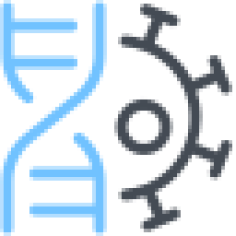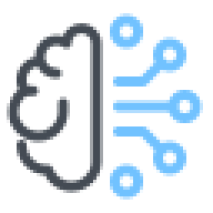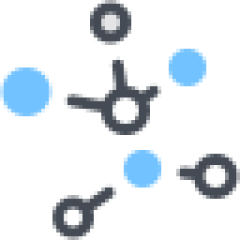Non-Research Projects (Virtual)
UCSD Summer Photography and Social Media Intern
Ange Mason, Education Program Manager, San Diego Supercomputer Center, UCSD

Capture summer fun at UCSD with photos and videos! Help us add to our photo gallery! This internship gives you the opportunity to be as creative as you wish well helping us to archive our summer 2025 outreach programs.
Stays until they ask a visit each of our summer programs during the week. Students will then create a small photo gallery for each workshop that we can not only share online, but also share with parents.
Students will be asked to help us with our social media presence, such as assistance with Instagram and Blue Sky.
Students must be proficient in Canva and be highly skilled in social media outfit

Number of Students Requested: 1–2
Number of hours per week: 10–15 hours
Plan to Integrate Student into Group Activity:
The student will attend the group meetings and share in weekly planning and logistical meetings. The student will work closely with the project lead and the other Education team members.
Student Prerequisite:
We are looking for a student who is self-driven and able to work with minimal supervision. Student must be customer service oriented and like working with a diverse population of students.
Interested applicants must have strong video creation knowledge(filming + editing). For a hint as to the skills that we are looking for, please visit this link: https://www.youtube.com/results?search_query=SDSCTV.
Relevant Links:
- Past student work: https://education.sdsc.edu/studenttech/?page_id=570
- San Diego Supercomputer Center: http://www.sdsc.edu/
- San Diego Supercomputer Center StudentTECH program: https://education.sdsc.edu/studenttech

Ange Mason
Education Program Manager, San Diego Supercomputer Center, UCSD
SDSC Summer Camp and Workshop Teaching Assistant
Ange Mason, Education Program Manager, San Diego Supercomputer Center, UCSD

This fun and interesting summer opportunity allows students to interact with summer camp attendees, their parent and instructors. Schedules for students in grades 6–12, this summer students will have a chance to explore beginning robotics, advanced robotics and programming! Some students may also experience our new ARE internship, which offers exposure to research areas such as computer science, medical engineering and data science
Student interns will act as teaching assistants for the above mentioned camps and workshops. Students must possess excellent communication skills and be able to interact easily with students in middle and high school. In addition to helping students better understand the materials being taught, students will help with daily check in and check out and assist instructor instructors with classroom and computer set up.
PLEASE NOTE – This is a five week opportunity only. Students will be asked to intern 20 hours per week. Camps and workshops will end on Friday, July 18, 2025.

Number of Students Requested: 1–2
Number of hours per week: To be arranged (10-15)
Plan to Integrate Student into Group Activity:
The intern will attend the group meetings and share in weekly planning and logistical meetings. The student will work closely with the project lead and the other Education team members.
Student Prerequisite:
We are looking for a student who is self-driven and able to work with minimal supervision. The intern must be customer service oriented and able to work with a diverse work setting. Problem solving skills are a must. Creativity and innovative ideas are desired. The intern must possess excellent written and oral skills.
Relevant Links:
- San Diego Supercomputer Center (SDSC): http://www.sdsc.edu
- SDSC StudentTECH program: http://education.sdsc.edu/studenttech

Ange Mason
Education Program Manager, San Diego Supercomputer Center, UCSD
Research Projects (Hybrid)
Metabolic Profiles of Cancer Diagnostics
Dr. Valentina Kouznetsova, Project Scientist, San Diego Supercomputer Center, UCSD
Dr. Igor Tsigelny, Department of Neurosciences, San Diego Supercomputer Center, UCSD

Cancer is the second leading cause of death in the United States, and responsible for 580,350 deaths in 2013, it has become ever more imperative that researchers focus their attention in this field. Ingenuity Integrated Pathway Analysis (IPA) program is used to build and explore transcriptional networks, microRNA-mRNA target networks, phosphorylation cascades, and Protein-Protein or Protein-DNA interactions. We try to identify regulatory effects that lead from signaling events to transcriptional events for causal network analysis and to construct a comprehensive chart of diseases and functions associated with target genes so as to elucidate gene functionality and possible points of drug administration.

Number of Students Requested: 1
Number of hours per week: 15-20 hours.
Plan to Integrate Student into Group Activity:
The student will be a part of the research team working on the larger scale project that includes the project described here. He/she will attend the group meetings and communicate with the team members using other methods of communication. The student will work closely with the lead person and the other personnel involved.
Student Prerequisite:
We are looking for a student who is interested in both biology and computation.
Relevant Links:
- San Diego Supercomputer Center (SDSC): http://www.sdsc.edu

Dr. Valentina Kouznetsova
Project Scientist, San Diego Supercomputer Center, UCSD
Click here to learn more about Dr. Kouznetsova.
Dr. Igor Tsigelny
Department of Neurosciences, San Diego Supercomputer Center, UCSD
Science Gateway Communications
Claire Stirm, San Diego Supercomputer Center, UCSD

The Science Gateways Center of Excellence (SGX3) is looking for talented communicators to explain cyber infrastructures and the research they are conducting to the community. To do this, the communicator will conduct research about these cyber infrastructures – which we call science gateways, understand each science gateways’ research applications to societal challenges, and document how they are solving research challenges or instructing the next generation. Tasks will include conducting your own research about multiple science gateway projects, writing down findings in a digital document to be shared with your mentor, and writing a story about the science gateway. During the summer you will publish several stories about these science gateways with support of your mentor. You will also work with the SGX3 team to publish these stories in monthly newsletters and on the sciencegateways.org website. The successful student candidate(s) will meet regularly with their mentor to review tasks and provide suggestions and feedback. The student candidate(s) will also have access to other communication channels to talk to other members of the SGX3 team via Slack and email.

Number of Students Requested: 1-2
Number of hours per week: 10-15 hours.
Names, organizations, and roles of others who may provide additional mentoring for the student:
- Janae Baker, SDSC, Community Project Manager for SGX3
- David Montoya, TACC, Website Developer Lead for SGX3
A description of the plan to integrate the student researcher into the group’s activities:
The student will attend the meetings with their mentor and join some group meetings with members of the SGX3 team. The student will work with their mentor to define weekly goals and actions. At the end of each week, the student will share back with the mentor outcomes and problem-solve on any challenges.
List of student prerequisites for the research project:
We are looking for a student who has excellent communication skills and is self-driven to expand
their research.
If you have interest or these bonus skills – a bonus but not required:
- Graphic design
- HTML
- Knowledge or experience interacting with research applications
Relevant Links:
- Science Gateways Website: https://sciencegateways.org/
- Science Gateways Storybook: https://sciencegateways.org/app/site/media/files/SGCI_storybook_interactive_v2022-12-13.pdf


Claire Stirm: Project Manager, San Diego Supercomputer Center, UCSD
Developing Interactive Jupyter Notebooks to run on the ICICLE project
Mary Thomas, Ph.D., Expanse and TSCC Training lead, Computational Data Scientist in the Data-Enabled Scientific Computing Division

This project involves running Jupyter Notebooks on the NSF funded Expanse high-performance (HPC) system [1] and testing software to be used on the NSF funded ICICLE AI project [3]. Expanse is SDSC’s newest supercomputer. The result of a $10M National Science Foundation (NSF) award, Expanse delivers over 5,2 peak petaFlOps of computing power to scientists, engineers, and researchers all around the world [2]. Expanse provides three kinds of HPC/CI resources: General Computing Nodes, NVIDIA GPU Nodes, and the petascale Luster filesystem. Thousands of users have accessed these high-performance computing (HPC) resources via traditional runs from the command line and using batch queuing systems.
The National Science Foundation funded AI Institute for Intelligent Cyberinfrastructure with Computational Learning in the Environment (ICICLE) [3] will build the next generation of Cyberinfrastructure to render Artificial Intelligence (AI) more accessible to everyone and drive its further democratization in the larger society. ICICLE will develop intelligent cyberinfrastructure with transparent and high-performance execution on diverse and heterogeneous environments. It will advance plug-and-play AI that is easy to use by scientists across a wide range of domains, promoting the democratization of AI.
Scientists using HPC Systems working with interactive HPC tools such as Jupyter notebooks to implement computational and data analysis functions and workflows [5]. Jupyter notebooks are web applications that allow you to create and share documents that contain live code, equations, visualizations and narrative text. These notebooks part of a general trend in research computing away from command-line style interfaces and towards browser-based and graphical interfaces. Jupyter notebooks are especially useful for interactivity: the development, testing, and exploration of data sets or as an instructional resource [6]. Users working interactively expect a timely response, both for initial application startup and during the course of a session.
The goals of this research project are:
- To test and develop Jupyter Notebooks that run software components developed by the ICICLE project.
- To learn the basics of Jupyter notebooks, AI, and Knowledge Graphs.
The research components are:
- Contribute to the body of knowledge needed for hosting live, dynamic, interactive services that interface to HPC systems
- Learn how to develop interactive notebooks to be used for education and training of the users of these systems

Number of students to be supported: 2-4
Number of hours per week: 15-25 hours
Plan to integrate student into group activity
Prior to beginning the REHS program, the selected student team members will be provided with recommended programming exercises to help build the skills they will need to learn in order to successfully complete this project. Dr. Thomas and other mentors will be available via email to provide guidance to the students on how to approach these exercises. During the first week of the REHS program, the student team will then work closely with Dr. Thomas and other mentors to build a research plan that clearly defines the milestones of the project in order to meet its goals. In addition, the students will have the opportunity to interact with other REHS students and undergraduate or graduate interns that will be working on similar projects.
Student Prerequisites
Applicants must have a demonstrated interest in computer science and mathematics. In addition, some previous experience in: Jupyter Notebooks; some exposure to Artificial Intelligence (AI) methods; programming in Python (preferred); exposure to the Linux/Unix operating system.
IMPORTANT APPLICANT CRITERIA – Please DO NOT apply if you:
- Cannot participate via Zoom or be on campus during most of the committed hours per week;
- Have more than one week of family vacation planned during the internship period;
- Have accepted another internship, either inside or outside of SDSC;
- Have a FT job during the internship position;
- Are taking an SAT prep class or other such course where course hours could conflict with summer internship hours.
Relevant Links
- https://www.sdsc.edu/News%20Items/PR20190716_Expanse.html
- https://www.sdsc.edu/services/hpc/expanse/
- The Intelligent Cyberinfrastructure with Computational Learning in the Environment (ICICLE) Project: https://icicle.osu.edu/
- http://www.ic-foods.org/
- https://www.tacc.utexas.edu/home
- The Jupyter Notebook Project Website, https://jupyter.org/
- Zonca, A. and R.S. Sinkovits, Deploying Jupyter Notebooks at scale on XSEDE for Science Gateways and workshops. Available at: https://zonca.github.io/docs/pearc18_slides_zonca_sinkovits.pdf

Mary Thomas, Ph.D.
Expanse and TSCC Training lead, and Computational Data Scientist in the Data-Enabled Scientific Computing Division
Click here to learn more about Dr. Thomas.
Additional mentors
- Matthew Lange, Ph.D., CEO, International Center for Food Ontology Operability Data and Semantics (IC-FOODS [4])
- Joe Stubbs, Ph.D., Manager, Cloud & Interactive Computing (Texas Advanced Computing Center [5])
- Andreas Goetz, Ph.D, Director, Computational Chemistry Laboratory
- Robert Sinkovitz, Ph.D., Director of Education (SDSC)
Molecular Mechanisms of Diseases: Cancer, Autism, Alzheimer’s disease
Dr. Valentina Kouznetsova, Project Scientist, San Diego Supercomputer Center, UCSD
Dr. Igor Tsigelny, Dept. of Neurosciences, San Diego Supercomputer Center, UCSD

Autistic Spectrum Disorders (ASD):
ASD is a neurodevelopmental disorder that includes social impairments, restrictive and repetitive behavioral patterns, and communication difficulties. Scientists have not found the cause for autism, however ASD is associated with both genetic and environmental factors. Autism is predicted to be caused by genetic mutations in critical neurological areas of the genome due to its etiological heterogeneity and likelihood in siblings. Specific genes and genomic loci have been located and implicated in ASD development. We study these gene interactions with the transcription factors that activate them and to find the spots of possible drug administration, molecular modeling and molecular dynamics simulations.
Alzheimer’s:
Alzheimer’s Disease is a neurodegenerative disorder that affects a variety of the brain’s functions, starting with short term memory loss, and eventually progressing to mood swings, disorientation, depression, and even loss of bodily functions. It is responsible for 60-70% of all dementia cases, and is the sixth leading cause of death in America. It is characterized by a buildup of β-amyloid plaques in the brain. There is no known cure for the disorder today, but recently, the amyloid hypothesis has been heavily researched as the mechanism of the disease. The amyloid precursor protein (APP) is cut by two enzymes, β-secretase and γ-secretase, and β-amyloid, the toxic form of the protein, is one of the segments that remains. Since the marker of Alzheimer’s is the buildup of this plaque in the brain, there is potential for slowing the progression of the disease if production of this protein is inhibited. We study existing drugs inactions with the target proteins and try to find methods to improve their action.
Cancer:
Cancer is the second leading cause of death in the United States, and responsible for 580,350 deaths in 2013, it has become ever more imperative that researchers focus their attention in this field. Ingenuity Integrated Pathway Analysis (IPA) program is used to build and explore transcriptional networks, microRNA-mRNA target networks, phosphorylation cascades, and Protein-Protein or Protein-DNA interactions. We try to identify regulatory effects that lead from signaling events to transcriptional events for causal network analysis and to construct a comprehensive chart of diseases and functions associated with target genes so as to elucidate gene functionality and possible points of drug administration.

Number of Students Requested: 3
Number of hours per week: 15-20 hours.
Plan to Integrate Student into Group Activity:
The students will be a part of the research team working on the larger scale project that includes the project described here. They will attend the group meetings and communicate with the team members using other methods of communication. The student will work closely with the lead person and the other personnel involved.
Student Prerequisite:
We are looking for a student who is interested in both biology and computation.
Relevant Links:
- San Diego Supercomputer Center (SDSC): http://www.sdsc.edu

Dr. Valentina Kouznetsova
Project Scientist, San Diego Supercomputer Center, UCSD
Click here to learn more about Dr. Valentina Kouznetsova.
Dr. Igor Tsigelny
Department of Neurosciences, San Diego Supercomputer Center, UCSD
UCSD EarthCube Science Writer
Kimberly Mann Bruch, External Relations, San Diego Supercomputer Center, UCSD

The EarthCube Office strives to assist geoscientists and the wider research community through tools, methods, standards, architectures, and community connections. Our group seeks high school students that are interested in writing pieces related to EarthCube projects from start to finish. As a result of this internship, students will come away with an ability to reduce technical jargon and other barriers for the creation of easy-to-understand written pieces. Students will have the opportunity to choose a geoscience domain that is of interest to them and create both written and video pieces regarding that topic.

Number of Students Requested: 2
Number of hours per week: 15-20 hours
Plan to Integrate Student into Group Activity:
Kim Bruch will supervise students with additional mentoring provided by Ben Tolo and Owen Stanley of the SDSC External Relations Group. An initial meeting will be used to outline the basics of the internship, with weekly meetings to keep everyone on track. Completed pieces may appear on the EarthCube website, with full credit given to students for their work so they may include it in their portfolios. Students will also participate in a poster session at the end of the internship.
Student Prerequisite:
- B or better, in at least one science or engineering course at the high school level.
- B or better, in an English class at the high school level.
- Proficiency with Google applications (docs, sheets, drive, etc).
Relevant Links:
- San Diego Supercomputer Center: http://www.sdsc.edu
- EarthCube: https://www.earthcube.org/

Kimberly Mann Bruch
Science Writer, External Relations, San Diego Supercomputer Center, UC San Diego
Neuroscience Gateway – Computational Modeling of Neurons and Processing of EEG Data
Amit Majumdar, San Diego Supercomputer Center, UCSD
Kenneth Yomomoto, San Diego Supercomputer Center, UCSD

The Neuroscience Gateway (NSG – https://www.nsgportal.org) provides access to supercomputing resources for computational and cognitive neuroscientists. Through a simple web-based portal, the NSG provides a user-friendly environment for uploading models or data, specifying supercomputing job parameters, querying running job status, receiving job completion notices, and storing and retrieving output data. The NSG distributes user jobs to appropriate supercomputing resources. REHS students will learn about supercomputing and NSG during the initial period of the internship. Followed by that REHS students will be involved in either computational modeling of neurons using the NEURON software or processing of Electroencephalography (EEG) data using the EEGLAB software. In computational modeling scientists build models of neurons or network of neurons that perform various functions in our brain. NEURON is a widely used software for such modeling of neurons. Students will learn about a modeling project as part of their internship. EEG project involves recording of brain’s electrical activities tied to some function a subject is performing, and processing the data using software (such as the EEGLAB) and computing resources to see connection between brain signals and the function. Students will record and process EEG data as a part of their internship.
We are interested in students who have some background and interest in programming and scripting and are interested in neuroscience, computer science, data processing and modeling. Some experience with programming languages and exposure to Linux systems are preferred.

Number of Students Requested: 3-6
Number of hours per week: 10-15 hours.
Plan to Integrate Student into Group Activity:
The student will be a part of the research team working on the larger scale project that includes the project described here. He or she will attend the group meetings and communicate with the team members using other methods of communication. The student will work closely with the lead person and the other personnel involved.
Student Prerequisite:
Some knowledge of web technologies such as JavaScript, MySQL database, HTML, & XML.
Relevant Links:
- Neuroscience Gateway: http://www.nsgportal.org/
- EEGLAB: https://sccn.ucsd.edu/eeglab/index.php
- NEURON: https://neuron.yale.edu/neuron/
- Video of introduction to NSG, and modeling of neurons and processing of EEG data using NSG: https://www.youtube.com/watch?v=_qehTEwrE0s

Kenneth Yomomoto
San Diego Supercomputer Center, UCSD
Amit Majumdar
San Diego Supercomputer Center, UCSD
Click here to learn more about Mr. Majumdar.
Additional Mentors:
- Arnaud Delorme, Swartz Center for Computational Neuroscience, UCSD
- Dung Truong, Swartz Center for Computational Neuroscience, UCSD
- Ted Carnevale, Department of Neurobiology, Yale University
Learning the Skills of Communications and Science Writing for SDSC Publications
Kimberly Mann Bruch, Science Writer, San Diego Supercomputer Center, UC San Diego

Our group seeks high school students who are interested in journalism with a focus on learning more about effectively communicating the results and societal benefit of science, engineering, and technological research projects. Candidates should have a strong desire to learn more about how to communicate technological research — with a keen eye for making the work both engaging and easily comprehended by a general audience. At the same time, students should be mindful of not diminishing the technical work of the research team in any way. Sound challenging?
As a result of this internship, students will come away with an ability to reduce technical jargon and other barriers for the creation of easy-to-understand written pieces. Students will have the opportunity to choose a science, engineering, and/or technological domain that is of interest to them and create written pieces regarding that topic as related to supercomputing.
Students will be assisted with both the science writing process as well as the final editing and completion of their articles with accompanying images, captions, and credits.

Number of Students Requested: 4
Number of hours per week: 15-20 hours.
Plan to Integrate Student into Group Activity:
Kim Bruch of the External Relations Group will supervise students. An initial meeting will be used to outline the basics of the internship, with weekly meetings to keep everyone on track. Completed pieces may appear on the SDSC and/or additional applicable websites, with full credit given to students for their work so they may include it in their portfolios. Students will also participate in a poster session at the end of the internship
Relevant Links:

Kimberly Mann Bruch
Science Writer, External Relations, San Diego Supercomputer Center, UC San Diego
Machine Learning in Computational Chemistry
Dr. Andreas Goetz, San Diego Supercomputer Center, UCSD

In this project, we will explore how modern machine learning approaches can be employed in computational chemistry. As a background, the work in our lab encompasses computer simulations based on quantum chemistry and molecular dynamics. We develop numerical models and software for atomistic simulations of condensed phase systems and apply these to solve problems in the chemical sciences, ranging from atmospheric chemistry to biochemistry and drug design. Our focus has been on multiscale methods that couple computationally demanding quantum descriptions of the electronic structure with computationally simpler classical interaction potentials in so-called QM/MM methods. This enables numerical simulations of realistic models that are intractable with pure QM methods. The importance of such methods has been recognized with the award of the 2013 Nobel Prize in chemistry for “the development of multiscale models of complex chemical systems”. While machine learning approaches have a long history in computational chemistry, recent advances in data storage and compute capabilities have ushered in a new era of data-driven approaches, which we seek to explore and combine with existing QM/MM models. We are involved in the development of several software packages that are used by many research groups in academia and industry. This includes the quantum chemistry software packages ADF and QUICK and the molecular dynamics simulations package AMBER. Several other major codes that are deployed on major national computer resources are also an integral part of our work.
In this REHS project, the students will explore machine learning approaches that may improve the speed or enhance the accuracy of current state-of-the-art QM/MM simulation approaches. We will jointly work through online course material that introduces machine learning concepts from simple classifications to deep learning, culminating in applications that predict chemical properties. We will make use of Jupyter notebooks, the Python programming language, and widely used machine learning software frameworks. We will explore the performance of the software on CPU and GPU hardware including the Expanse supercomputer at SDSC. Time permitting, we will generate training data using quantum chemistry software and develop models that can predict new data without having to run the expensive QM simulations in the first place. The interns will thus have the possibility to acquire a wide range of skills in data science, computational chemistry, and high-performance computing. As an essential part of the internship the students will learn how to document their research, prepare research reports and present their results to their peers – skills that are very important for a successful research and engineering career.

Number of Students Requested: Up to 2 students, learning together and working on complementary aspects such as different data sets to train deep neural networks for distinct sets of chemical properties.
Number of hours per week: 20-25 hours
Plan to Integrate Student into Group Activity:
Dr. Andreas Goetz who is actively working on the model development, software implementation and simulation projects will closely supervise the students, work jointly with the students through the training material, and will meet with the students on a regular basis. In addition, the students will have the opportunity to interact with other high school students working in the lab and in the REHS program.
Student Prerequisite:
The candidates should have an interest in machine learning, software development, and chemistry. Prior machine learning expertise is not required. Exposure to scripting or compiled programming languages or familiarity with Linux and command line environments is expected. Specific knowledge of any of these areas is less critical than exceptional intellectual ability and good work ethic.
Relevant Links:
- Dr. Goetz’ website: www.awgoetz.de
- AMBER software: www.ambermd.org
- QUICK software: https://github.com/merzlab/QUICK
- ADF software: www.scm.com
- Deep Learning for Molecules and Materials course: https://dmol.pub

Dr. Andreas Goetz
San Diego Supercomputer Center, UCSD
Elucidation of Common Molecular Mechanisms of Parkinson’s Disease, Alzheimer’s Disease, and Diabetes
Dr. Valentina Kouznetsova, Project Scientist, San Diego Supercomputer Center, UCD
Dr. Igor Tsigelny, Dept. of Neurosciences, San Diego Supercomputer Center, UCSD

Aggregation of specific proteins is associated with a number of diseases including Parkinson’s (PD), Alzheimer’s (AD), and other neurodegenerative diseases. Type II diabetes (T2D) is also linked to aggregation of Islet amyloid polypeptides (IAPP) IAPP is found to be significantly accumulated as extracellular amyloid deposits in the pancreas of T2D patients; it is shown that early oligomers are significantly cytotoxic species that lead to beta-cell apoptosis. The mechanisms through which IAPP leads to T2D are unclear. Various lines of evidence appeared to support the contention that IAPP oligomers built in the early stages of aggregation form annular protofibrils and consequently pores in the membranes the same way as amyloid-beta and alpha-synuclein correspondingly create pores in the cell membrane in AD and PD. Increase of calcium influx to the cells can lead to apoptosis in case of all these diseases.
The specific tasks of the project are using computer modeling and simulations to accomplish the following goals: (1) To characterize the interactions between IAPP, amyloid beta, and alpha-synuclein molecules in oligomers, and interactions between molecules and the membranes. (2) To validate a concept of self-assembly of these molecules, using a set of mutants known to enhance or inhibit IAPP aggregation process with identifiable structural properties.
The task will include extensive analysis of research articles in the field, related to modeling and simulations above mentioned proteins and their interactions with the membrane. Computational molecular modeling and molecular dynamics simulations.

Number of Students Requested: 1
Number of hours per week: 15-20 hours
Plan to Integrate Student into Group Activity:
The student will be a part of the research team working on the larger scale project that includes the project described here. He or she will attend the group meetings and communicate with the team members using other methods of communication. The student will work closely with the lead person and the other personnel involved.
Student Prerequisite:
We are looking for a student who is interested in both biology and computation.
Relevant Links:
- San Diego Supercomputer Center: http://www.sdsc.edu

Dr. Valentina Kouznetsova
Project Scientist, San Diego Supercomputer Center, UCSD
Click here to learn more about Dr. Kouznetsova.
Dr. Igor Tsigelny
Department of Neurosciences, San Diego Supercomputer Center, UCSD
Open Science Chain
Scott Sakai, Research Scientist, San Diego Supercomputer Center, UCSD

The Open Science Chain (OSC – http://www.opensciencechain.org) project uses blockchain technologies to protect the integrity and provenance of research artifacts. The project is looking for summer interns who are interested in working with the OSC project. Interns will have the opportunity to engage in various tasks, including developing blockchain applications, revamping the web portal, or assisting in unit test development, depending on their interests and expertise levels. Programming experience (Go, Java etc) and familiarity with Linux and container technology are preferred. This is a completely virtual internship.

Number of Students Requested: 1-2
Number of hours per week: 10-15 hours.
Plan to Integrate Student into Group Activity:
Students will participate in weekly meetings with mentors virtually over Zoom.
Student Prerequisite:
Coding skills (min one): Python, C, Java, Nodejs, Go or similar; Familiarity with Linux.
Relevant Links:

Scott Sakai
Research Scientist, San Diego Supercomputer Center, UCSD
Additional Mentors:
- Fernando Garzon, San Diego Supercomputer Center, UCSD
- Steven Yeu, San Diego Supercomputer Center, UCSD
Continuous Integration and Continous Deployment of the MLPerf Inference Benchmarks on High-Performance Computing Systems via the Space Manager Pack
Marty Kandes, Ph.D., Computational & Data Science Research Specialist, San Diego Supercomputer Center, SDSC

The MLPerf Inference Benchmarks are designed to measure and evaluate the performance of artificial intelligence (AI) and machine learning (ML) inference workloads on different computer hardware and software platforms. The benchmarks include problems in computer vision, natural language processing, and generative AI.

The fundamental aim of this research project is to develop a continuous integration and continuous deployment (CI/CD) pipeline to automate the process of building, testing, deploying, and running a subset of the MLPerf Inference Benchmarks on Expanse – a high-performance computing (HPC) system designed to support a wide range of scientific research.

During the course of this project, you will learn how to:
- run compute jobs on a supercomputer like Expanse via the Slurm workload manager;
- setup a secure, end-to-end CI/CD pipeline using GitHub Actions; and
- evaluate the performance of AI/ML inference workloads.


Number of Students Requested: 2
Number of hours per week: 15-20 hours.
Plan to Integrate Student into Group Activity:
Prior to the start of the REHS program, students will be provided with a set of recommended tutorials to help build the technical skills necessary to successfully complete the project by the end of the summer. Dr. Kandes will be available via email, Slack, or Zoom during this time to provide any additional guidance the students may need on how to approach this material. At the beginning of the program, Dr. Kandes will work closely with the team to build a research plan that clearly defines the goals and milestones of the project. Thereafter, the students will be expected to work both independently and collaboratively with one another on the project. Dr. Kandes will continue to meet regularly with the team to get updates on their progress, ask questions, and discuss any technical issues they’ve encountered.
Student Prerequisite:
Applicants should have a demonstrated interest in computer science and mathematics, a basic understanding of data analysis and visualization techniques, and some previous programming experience.
Relevant Links:
- https://spack.readthedocs.io/en/latest/
- https://spack-tutorial.readthedocs.io/en/latest/_static/slides/spack-sc22-tutorial-slides.pdf
- https://github.com/spack/spack
- https://github.com/sdsc/spack
- https://e4s-project.github.io/
- https://www.sdsc.edu/services/hpc/expanse/
- https://sdsc.edu/services/hpc/tscc/index.html
- https://access-ci.org/

Marty Kandes
Ph.D., Computational & Data Science Research Specialist, San Diego Supercomputer Center, SDSC
Click here to learn more about Mr. Kandes.














